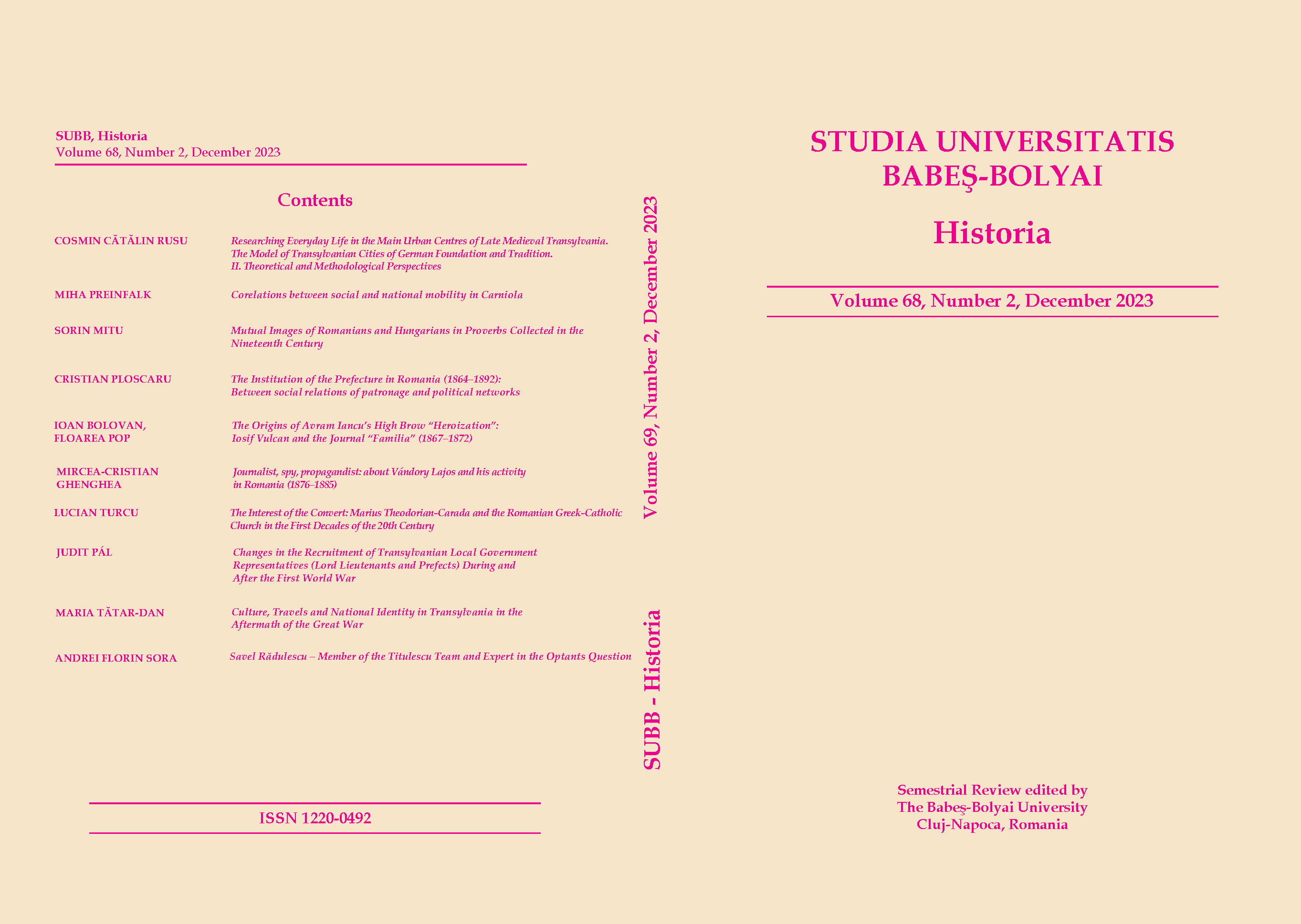RESEARCHING EVERYDAY LIFE IN THE MAIN URBAN CENTRES OF LATE MEDIEVAL TRANSYLVANIA. THE MODEL OF TRANSYLVANIAN CITIES OF GERMAN FOUNDATION AND TRADITION. II. THEORETICAL AND METHODOLOGICAL PERSPECTIVES
RESEARCHING EVERYDAY LIFE IN THE MAIN URBAN CENTRES OF LATE MEDIEVAL TRANSYLVANIA. THE MODEL OF TRANSYLVANIAN CITIES OF GERMAN FOUNDATION AND TRADITION. II. THEORETICAL AND METHODOLOGICAL PERSPECTIVES
Author(s): Cosmin Cătălin RusuSubject(s): History, Cultural history, Local History / Microhistory
Published by: Studia Universitatis Babes-Bolyai
Keywords: History of Everyday Life; Urban History; Transylvanian Saxons; Late Medieval and Premodern Archaeology and Material Culture; Late Medieval and Premodern Transylvania;
Summary/Abstract: A theoretical-methodological reflection must be situated at the beginning of any historical approach, with the aim of individualizing the discipline of the history of everyday (medieval) life and differentiating it as an independent branch of research.* The most important aspects of the investigation consist in: a) formulating clear questions and b) defining the goals of knowledge/understanding, to eliminate the risk of ending up with a simple collection of anecdotes – which, while undeniably captivating, cannot be considered science, and, consequently, becomes part of literature. In its elementary form, daily life is a simple manipulation of certain constants – the environment, people and things, understood through the daily repetition of certain activities, which become habits and are then performed mechanically. It is often stated that the history of everyday life does not have its own method, and it follows the analysis grids of history, more precisely of its auxiliary disciplines. Moreover, the history of everyday life remains dependent on the help of other sciences. In this context, the research is interdisciplinary, involving most of the auxiliary or frontier sciences of history: history of law, archaeology, literature and philology, music and art history, historical geography and ethnography, etc. Research schedule and analysis grid. Based on the historiographic documentation, the theoretical-methodological excursion and the identification of the potential and the limits of the available sources, the perspective that this study proposes is that of a research program dedicated to the reconstruction of the history of everyday life in the late medieval Transylvanian urban centres. The proposed approach is organized into three distinct sections: a) that of the recomposing of frames and the dynamics of daily urban life; b) that of revealing the fundamental structures of everyday life in cities and c) that of identifying the challenges and solutions assumed by the day-to-day existence of individuals, groups and the urban community.
Journal: Studia Universitatis Babes-Bolyai - Historia
- Issue Year: 68/2023
- Issue No: 2
- Page Range: 3-28
- Page Count: 26
- Language: English

